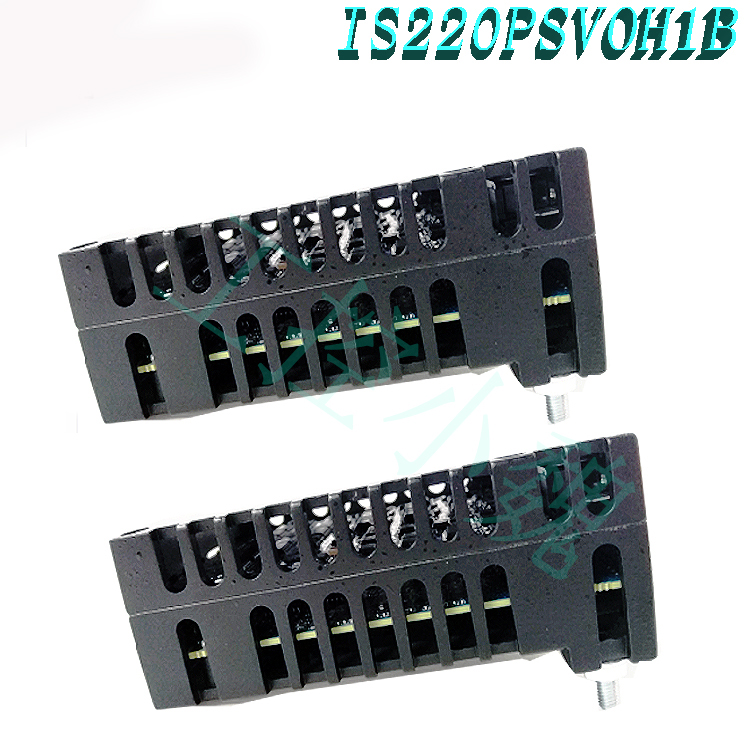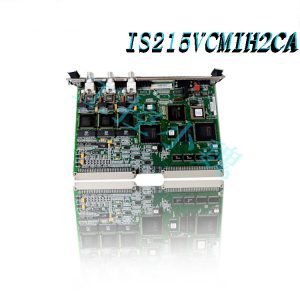Description
IS220PRTDH1A – The input module of the resistance temperature device is in stock and will be shipped on the same day.
IS220PRTDH1A – The input module of the resistance temperature device is in an unused and rebuilt state.
To receive the best discount on IS220PRTDH1A – Resistance Temperature Device Input Module, please contact us and we will reply to you within 24 hours.
Product Description
IS220PRTDH1A is a resistance temperature device input module for General Electric. This module is part of the GE Mark VIe Speedtronic system, which is one of the final available Speedtronic systems. The Speedtronic series was created by GE in the 1960s to manage industrial gas and steam turbines, including popular versions such as Mark I, Mark II, Mark IV, and Mark VI.
IS220PRTDH1A is an I/O package designed for use with terminal boards. When used in conjunction with specific terminal blocks such as IS200TRTDH2D, IS200SRTDH1A, or IS200SRTDH2A, it is approved for use in hazardous locations. This device has its own power supply.
Only resistive simple devices (such as RTDs) should be connected to the RTD input on IS220PRTDH1A. The cables used for these connections should have appropriate insulation as specified in local electrical regulations.
The front panel of IS220PRTDH1A includes LED indicators for two Ethernet ports of the I/O unit, as well as a power supply and an ATTN LED indicator. The port is located on the side of the device.
Before adding any type of packaging material, the weight of the device is approximately 4.40 pounds. The dimensions are 34 x 18 x 10 centimeters. This device has CE marking and UL certification.
Function Description
IS220PRTDH1A is a resistance temperature device input module manufactured and designed by General Electric, as part of the Mark VIe series used in distributed control systems. The RTD input terminal board and one or more I/O Ethernet are electrically connected through a resistive temperature device (RTD) input (PRTD) package. This package includes a dedicated acquisition board for thermocouple input function, as well as a processor board shared by all Mark VIe distributed I/O packages. The I/O package can support up to 8 RTD inputs, while the TRTD terminal board can support up to 16 RTD inputs. Input using a DC-37-pin connector directly connected to the battery pack terminal board connector and a three pin power input. There are two RJ45 Ethernet connectors for output. LED indicator lights are used to display visual diagnosis.
Figure 1: PRTD Block Diagram
IS220PRTDH1A compatibility
The RTD input terminal boards TRTDH1D, H2D, and SRTD are all compatible with PRTDH1A, but the DRTD boards installed on DIN rails are not compatible. The following table provides compatibility information.
One I/O packet and one or two network connections are used in a simplex manner..jpg)
Dual uses two I/O packets and one or two network connections.
TMR uses three I/O packets, each with a network connection.
The TRD input circuit is electrically isolated through PRTD. This requires modifications to the transient protection of the terminal boards of TRTDH1D and TRTDH2D. The H1D version of the board provides filtering functionality that is compatible with the PRTD standard scanning rate. When choosing the fast scanning rate of PRTD, the H2D version of the terminal board provides less filtering to achieve appropriate performance. Although it will not cause any physical harm, if PRTD is installed on an earlier version of the TRTD board, incompatibility will be detected.
IS220PRTDH1A installation
Firmly install the required terminal board.
Connect one or two PRTDs directly to the terminal board (for simplex control of 8 or 16 RTDs).
Use the threaded plug next to the Ethernet port to mechanically secure the battery pack. Connect the plug-in to the installation bracket specific to the type of terminal board. The positioning of the bracket is crucial to ensure that the DC-37 pin connector between the terminal board and battery pack is not subjected to a right angle force. Only one adjustment is required during the service life of the product.
According to system configuration, connect one or two wires to ensure optimal operation of either port. When using dual connections, ENET1 is usually connected to the network connected to the R controller.
Connect the connector on the side of the battery pack to provide power to the battery. The I/O package includes a built-in soft start function that can limit current surges when powered on, so there is no need to unplug the cable before connecting it.
To customize I/O packages as needed, use the ToolboxST * application.
Processor board operation
The I/O package or module specific acquisition board is connected to the processor board. When input power is applied, the soft start circuit will increase the available voltage on the processor board. Turn off processor reset and turn on local power in order. After completing the self check routine, the processor loads application code specific to the I/O package or module type from flash memory. To verify whether the application code, collection board, and terminal board are correctly matched, the application code reads the board ID information. When there is a good match, the processor will attempt to initiate an Ethernet connection by requesting a network address.
The address request uses industry standard Dynamic Host Configuration Protocol (DHCP) and unique identifiers of the terminal board. After the Ethernet is started, the CPU runs the application program, programs the onboard logic, and allows the collection board to start working.
The entire circuit required to enable I/O packets to run through one or two Ethernet inputs is included in the processor application code. When using two Ethernet inputs, both network paths are always active. The operation of I/O packages or modules will not be hindered by any network failure, and a functioning network connection will display a fault. Compared to traditional hot backup systems that only use the second port when the primary port is not working, this configuration has higher fault tolerance. The Ethernet port of the processor automatically negotiates between half duplex and full duplex operations at speeds between 10 MB/s and 100 MB/s.
This processor board is shared by all Mark VIe Ethernet I/O packages or modules. It includes the following content:
A fast processor with RAM and flash memory is the first.
Two completely independent 10/100 Ethernet port plugs
Hardware reset and watchdog timer circuit
Internal temperature sensor
LED indicating status
Ability to read IDs and electronic identities on other boards
Input power connector with current limiter and mild start function
Local power supply, including monitoring and sorting
IS220PRTDH1A diagnosis
Power on self-test can check the hardware on the CPU board, Ethernet ports, RAM, and flash memory.
Continuously check if the internal power supply is working properly
Verify if the hardware group matches by comparing electronic ID data from the CPU, acquisition board, and terminal board, and then check if the application code loaded from flash memory is suitable for the hardware group.
The hardware limitation check for each RTD type is based on predetermined (non configurable) high and low levels near the edge of the working range. Once this limit is reached, the input is no longer checked, but the logic signal is set.
If the hardware limit of any one of the eight inputs is reached, a composite diagnostic alarm L3DIAG PRTD will be generated that involves the entire board. Information about each diagnosis can be obtained from the toolbox. Each diagnostic signal can be latched, and the RESET DIA signal can be used to reset them.
The system limit test for each RTD input is completed using customizable high and low levels. These restrictions can be adjusted for enable/disable and lock/unlock, and can be used to trigger alarms. The over limit signal is reset through RESET SYS.
This toolbox provides detailed information about each diagnosis. Diagnostic signals can be individually latched, and if they are normal, they can be reset using the RESET DIA signal.
Frequently asked questions
What is GE Mark VIe IS220PRTDH1A?
IS220PRTDH1A is a resistance temperature device input module developed by General Electric for distributed control systems.
How to check the price and supply situation of IS220PRTDH1A?
Please call+86 18030177759 to contact the Industrial Control Sales Consultant: Carrey for sales or to request a quote.
What is the common mode voltage range?
The common mode voltage range is+or -5 volts.
What is the maximum lead resistance of the component?
The maximum lead resistance is 15 ohms (bidirectional cable resistance)
What is the normal mode suppression of components?
The normal mode suppression is 60 dB at a normal scanning 50/60 Hz system frequency, with a suppression of up to 250 mV rms.
All products on this website are special products, and market prices have been fluctuating,
The specific customer service quotation shall prevail, as the product is a new product and the price is not genuine,
Please confirm the model, product, price, and other detailed information with customer service before placing an order. The website has been used,
The new one is for sale, please contact customer service to communicate.
Discounted spot goods:
IS220PSCAH1A
IS220PVIBH1A
IS200JPDEG1A
IS200VPROH1BEF
IS200VPROH2B
IS200VPROH2B
IS200VPWRH1AHD
IS200VPROH1BEF
IS200VPROH2B
IS220PDIAH1BE
More……


.jpg)
-300x300.jpg)
-300x300.jpg)

Reviews
There are no reviews yet.